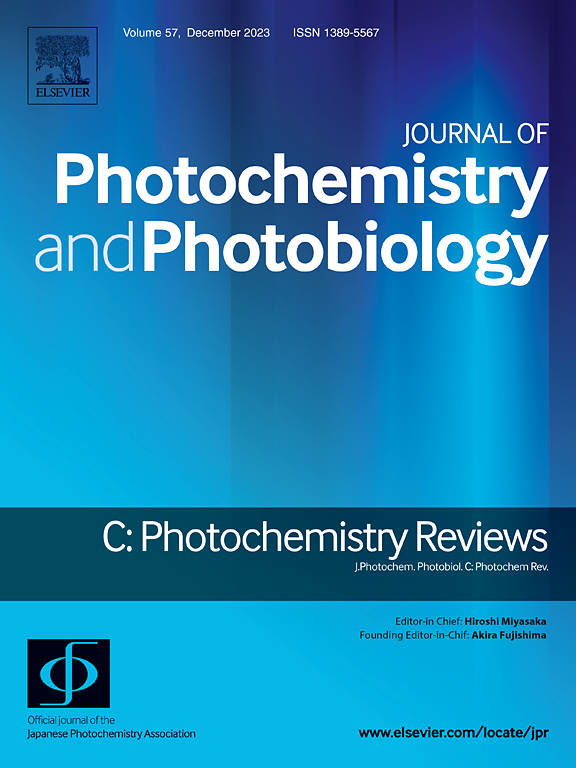Near infrared light-assisted photoelectrochemical conversion and environmental remediation
IF 13.1
1区 化学
Q1 CHEMISTRY, PHYSICAL
Journal of Photochemistry and Photobiology C: Photochemistry Reviews
Pub Date : 2025-06-13
DOI:10.1016/j.jphotochemrev.2025.100710
引用次数: 0
Abstract
Solar energy conversion to chemical energy is a practical approach to sustainable development. Despite continuous advancements in energy technologies, conversion efficiencies remain shallow and below desired levels. Most research efforts are concentrated on absorbing the UV-Vis portion of solar radiation, with relatively little attention given to the infrared segment, even though it constitutes a substantial portion of solar radiation, accounting for ∼50 %. The photon energy in the NIR (Near-Infrared) range is insufficient. It does not correspond adequately to the semiconductor bandgap energy levels required to stimulate the generation of electrons and holes. However, novel nanomaterials are being scrutinized to absorb NIR light and generate photoexcited electrons/holes, which can be utilized to transform effectively through novel electron transfer pathways. Engineering surface and bulk properties of these NIR absorbing nanomaterials and harnessing NIR radiations have shown promising results in ameliorating the light conversion, yield, and faradaic efficiencies. This review article highlights the methodology, in-depth mechanistic models, current progress, and potential of NIR light in assisting organic dye degradation (waste water treatment), H2 production, CO2 reductions, N2 reduction through photocatalytic and photoelectrocatalytic pathways.
近红外光辅助光电化学转化与环境修复
太阳能转化为化学能是实现可持续发展的切实可行的途径。尽管能源技术不断进步,但转换效率仍然很低,低于预期水平。大多数研究工作集中在吸收太阳辐射的UV-Vis部分,相对较少关注红外部分,尽管它构成了太阳辐射的很大一部分,占~ 50% %。近红外(NIR)波段的光子能量不足。它与激发电子和空穴产生所需的半导体带隙能级不完全对应。然而,新的纳米材料正在研究吸收近红外光并产生光激发电子/空穴,这些电子/空穴可以通过新的电子转移途径有效地转化。这些近红外吸收纳米材料的工程表面和体特性以及利用近红外辐射在改善光转换,产率和法拉第效率方面显示出有希望的结果。本文综述了近红外光通过光催化和光电催化途径辅助有机染料降解(废水处理)、H2生成、CO2还原、N2还原等方面的研究方法、深入的机理模型、目前的进展和潜力。
本文章由计算机程序翻译,如有差异,请以英文原文为准。
求助全文
约1分钟内获得全文
求助全文
来源期刊
CiteScore
21.90
自引率
0.70%
发文量
36
审稿时长
47 days
期刊介绍:
The Journal of Photochemistry and Photobiology C: Photochemistry Reviews, published by Elsevier, is the official journal of the Japanese Photochemistry Association. It serves as a platform for scientists across various fields of photochemistry to communicate and collaborate, aiming to foster new interdisciplinary research areas. The journal covers a wide scope, including fundamental molecular photochemistry, organic and inorganic photochemistry, photoelectrochemistry, photocatalysis, solar energy conversion, photobiology, and more. It provides a forum for discussing advancements and promoting collaboration in the field of photochemistry.

 求助内容:
求助内容: 应助结果提醒方式:
应助结果提醒方式:


